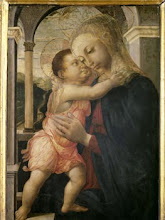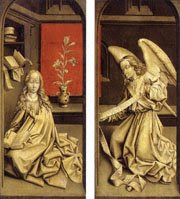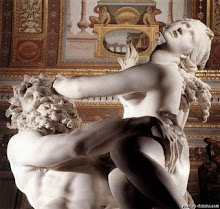




BRAY, Salomon de
(b. 1597, Amsterdam, d. 1664, Amsterdam)
Biography
Dutch painter of biblical and allegorical scenes, poet and architect. Salomon de Bray was born in Amsterdam in 1597 as the son of Simon de Bray and Marie Jansdr. His father was originally from Lier in the Southern Netherlands. Salomon must have moved to Haarlem before 1617, as he is referred to in that year as a 'friend' of a rhetoric association called De Wijngaardranken. That is the only year in which he is known to have been a member. His brother Simon, an attorney, was a member from 1616 to 1622 or possibly longer.
In 1621, Theodoor Rodenburg compiled a memorandum for King Christian IV of Denmark in which he mentions that Salomon had studied under Hendrick Goltzius and Cornelis Cornelisz van Haarlem. The document reveals that De Bray was 'willing to leave Haarlem and move here to Copenhagen'. Rodenburg took a painting of a woman (a 'vrouwenbeeldt') by De Bray as a sample of the artist's work, but we do not know what the king himself thought of it. Nor is it known whether Salomon actually did go to Denmark.
De Bray was a member of the first chapter of the Haarlem Calivermen. On 4 May 1625, the banns were published announcing his marriage to Anna Westerbaen, the daughter of a rope maker from The Hague. Anna was the sister of the portraitist Jan Westerbaen and the poet and physician Jacob Westerbaen, who had married into a wealthy family. Salomon and Anna had at least ten children, three of whom grew up to be the painters Joseph, Jan and Dirck, who was also a bookbinder and woodcutter. Salomon de Bray was a Catholic, as he himself pointed out in a letter to a priest, which he signed together with Pieter Soutman and Claas van Bouckhorst. Salomon assured the clergyman that he could reply to them quite frankly, as all three were 'Catolycke persoonen'. De Bray was an active member of St Luke's and played a particularly prominent role in a campaign to reorganise the guild in the 1630s.
Salomon de Bray painted history pieces, the majority of them relatively small, as well as portraits and landscapes. His most prestigious commission was the project for Huis ten Bosch. He must also have produced several altarpieces for secret Catholic churches {schuilkerken), and in August 1663, he received a visit from Balthasar de Monconys, who bought a painting of Hermaphroditus from him.
De Bray was also active as a designer of silverwork, as a poet, an architect and a town planner. Two design drawings for silverware are known: one for a silver drinking horn, which has itself survived, and one for a dish. He evidently also designed religious objects, as the will his son Jan de Bray drew up in 1664 refers to 'drawings of chalices and monstrances made by Mr Salomon de Bray'. In 1627, the Amsterdam publisher Jacob Aertsz Colom produced an anthology of poetry and verse dedicated to 'the honourable and gracious' Margarita Kick, who, according to the preface, was Salomon's niece. In 1631, De Bray published 'Architectura Moderna ofte Bouwinge van onsen tyt', a volume containing numerous design engravings, the majority by Hendrick de Keyser. De Bray wrote the accompanying commentary as well as an introduction that amounted to a treatise on architecture. His 'Bedenckingen over het uytleggen en vergrooten der stadt Haarlem', which appeared in 1661, set out his views on the proposed expansion of Haarlem.
Though De Bray consistently described himself as an architect as well as a painter, little is known about his work in this field. The earliest reference to his involvement in an architectural project dates from 1627, when he was paid for his design for the Zijipoort, one of Haarlem's city gates. He was also involved in the planning of alterations to Haarlem Town Hall and the castle in Warmond, and the building of the municipal orphanage in Nijmegen.
De Bray was a close acquaintance of the composer Cornelis Padbrué, who published a book of music called the Kusies in 1631. The second edition contained madrigals to poems by De Bray's brother-in-law Jacob Westerbaen, a musical arrangement for a poem by Salomon de Bray and a composition by Pieter de Grebber.
In 1658, De Bray was asked to produce the Dutch translation of Italian terms for the publication of Scamozzi's architectural treatise, which he did on the basis of four engravings. On this occasion the publisher, Cornelis Danckertsz, described him as 'conversant in Greek, Latin, French and Italian'." In 1637, De Bray paid a visit to Nijmegen to view Johannes Smetius's famed collection of archaeological artefacts. De Bray was apparently quite fastidious about his work. He dated the majority of his drawings to the day, while the preface to his poems also commends him for his precision. Rodenburg's memorandum vouches for his 'unimpeachable conduct'.
Salomon de Bray died on 11 May 1664, probably in a plague epidemic. He was buried three days later in the church of St Bavo. The disease claimed much of his family. His youngest son Jacob was buried on 27 April, barely a fortnight earlier. The funeral of his son Jacob was held on 18 May and was followed five days later by those of his daughters Juliana and Margaretha. Salomon's wife, Anna Westerbaen, had been buried the previous year, on 3 March 1663.
























.jpg)

.jpg)










